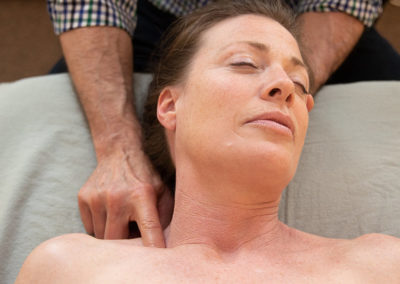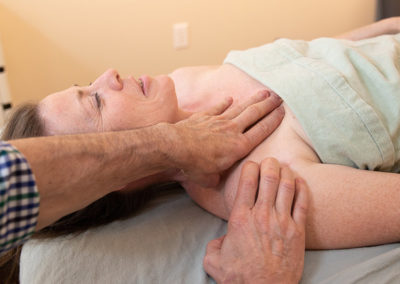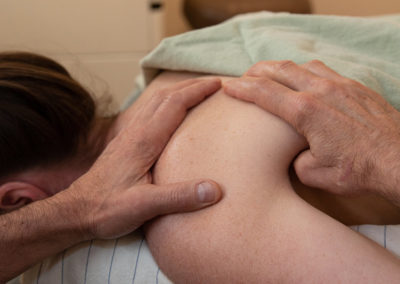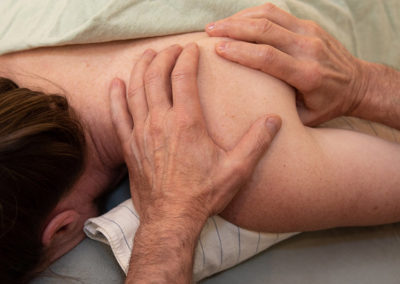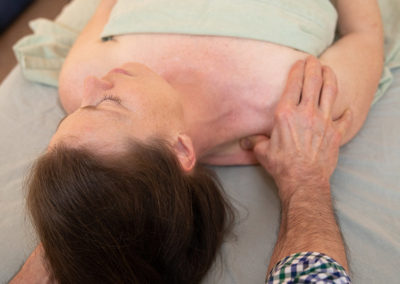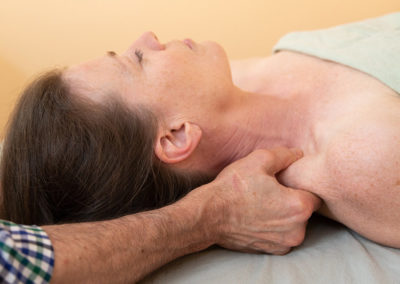Frozen Shoulder & Shoulder Pain Treatment
$120 per 1-Hour Session
The biggest culprit of pain in shoulders comes from either the supraspinatus muscle that lifts the arm out to the side and upward or the subscapularis muscle which rotates the upper arm forward, as when one is throwing a ball.
These muscle spasms, along with resulting protective splinting of the rest of a shoulder’s soft-tissues, are most often the main cause of pain, rather than actual tendon or ligament tears.
Trauma examples which can cause this type of pain are:
- If you fall and the upper arm bone is jammed into the shoulder joint, or if you reach out and upward with too much weight in your hand causing too much force or strain, these actions can pinch and traumatize the supraspinatus muscle. The result is that you won’t be able to lift your arm up over your head completely.
- If you stop yourself while falling forward by putting your weight on the thumb side of you hand, or if you throw something with too much force, you can spasm and strain the subscapularis muscle which lies between the scapula and the ribs of your upper back.
In both situations the muscle pinches and spasms and then swells enough to limit lifting outward and upward. The supraspinatus muscle passes through a thin passage under your outer shoulder bone. After sustaining this injury, the least bit of movement may hurt, indicating that the area is being slightly re-traumatized. As a result, the whole shoulder girdle of muscles may react automatically by becoming rigid in order to provide an internal “splint.” This is the body’s method to stabilize and stop movement in injured areas. If this sounds familiar, please do not keep using the arm in a way that causes pain or discomfort. Please call me to get help releasing the muscle spasms.
Shoulder pain, along with limited range of movement, is frequently called “adhesive capsulitis,” also known as frozen shoulder. Adhesive capsulitis happens when scar tissue in ligaments or muscles restrict arm movement. I most often find that clients have chronic muscle spasms which, when released, returns a majority of range of motion without surgery! This splinting and locking up of the shoulder can also happen after surgery and can be treated. Call me to discuss whether this may be what’s causing your pain. This consultation call is free.
Surprisingly, this type of injury and spasm can cause pain in places other than the actual sight of injury. You may also experience pains down the side, front or back of the arm as well as in between the shoulder blades. These are called trigger point referrals. I find that you need someone trained to release trigger points without overstimulating them. Overly aggressive massage, palpation or range-of-motion testing often make this type of pain worse. I can help you with this problem through my gentle diagnostic process.
Postural distortion patterns, such as chronically forward shoulders and inward rolled upper arms, will often exacerbate or predispose us to shoulder injury and pain. This is where I can help, too, by doing a postural evaluation.

